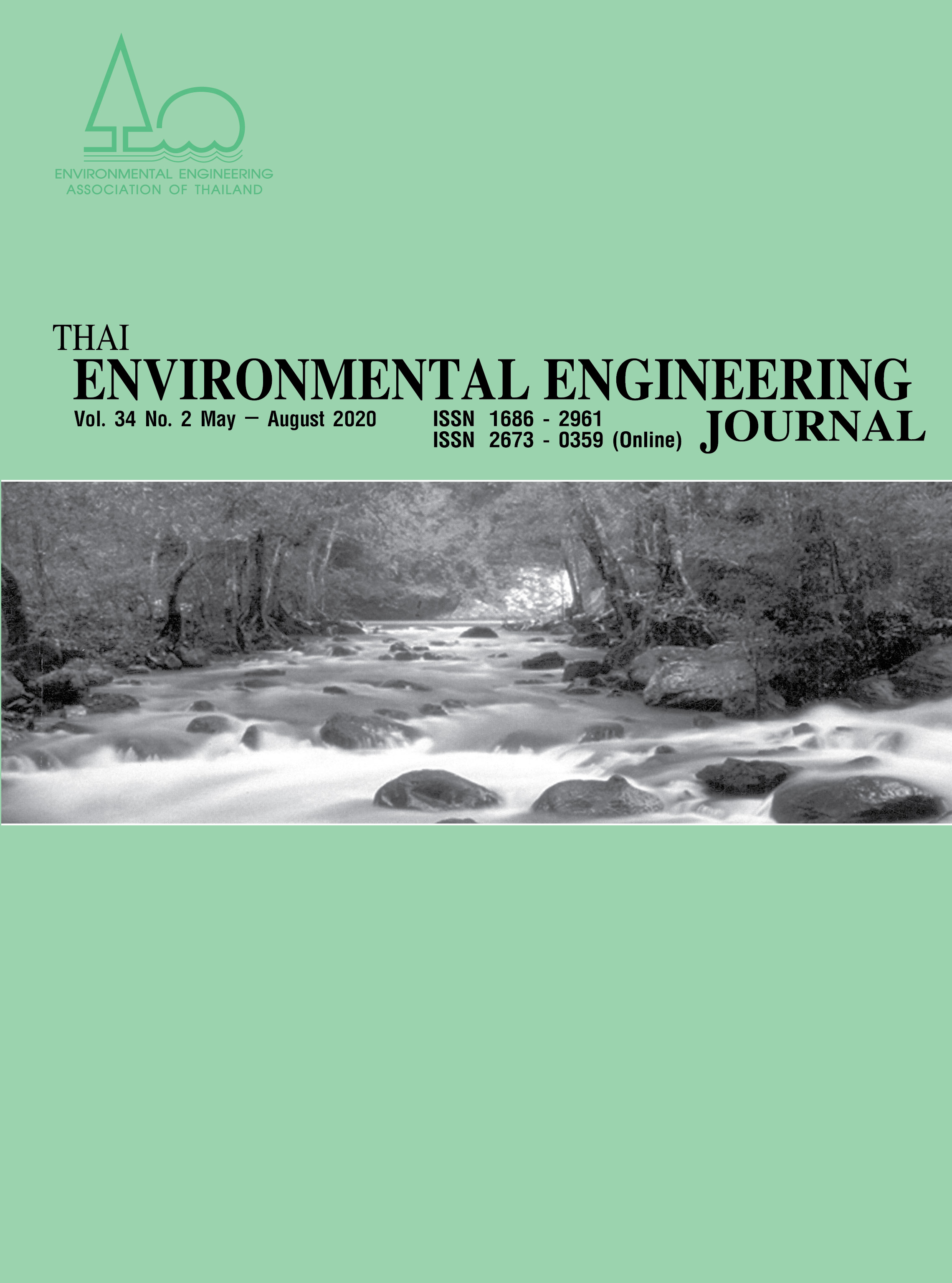Comparison of MPs Contamination between Downstream and Upstream Sites: A Case Study of Lower Chao Phraya River, Thailand
Main Article Content
Abstract
Microplastics (MPs) were ubiquitously found and distributed globally in the environments especially marine environment. Majority of MPs were discharged from land to the sea. However, most of the studies focused on the marine environment and few reports were studied MPs in the freshwater environment especially from Asia continent which was reported to be main contributor for MPs pollution. Thailand as one of the top countries that was estimated to produce mismanaged plastic waste to the ocean is expected to discharge MPs to the river and the sea. This study investigated MPs pollution in Chao Phraya river, major river in Thailand, by focusing on the lower Chao Phraya river at two sites: upstream at Pathum Thani province and downstream at Bangkok Metropolis to identify concentration and characteristics of MPs in surface water and evaluate impact of urbanization by comparing MPs results from two different sites. MPs were sampled on surface water by manta trawl. Results of MPs concentration were 4.0 and 22.9 MPs particles/m3 at upstream and downstream sites, respectively. FT-IR results reveal that majority of MPs were polyethylene and polypropylene which are common materials for single use plastics. In addition, the compared results showed that the downstream site had higher MPs concentration and component types which indicate higher MPs inputs from several sources which clearly showed effects of urbanization at Bangkok. More investigation about MPs sources and seasonal variation are recommended for future study. In addition, results of MPs size distributions at both sites showed a similar trend toward smaller size and 8 percent of MPs found at the downstream site were below 335 µm which is mesh site of manta net used in this study. Thus, investigation of smaller MPs is also recommended in the future.
Article Details
References
Geyer R, Jambeck JR, Law KL. Production, use, and fate of all plastics ever made. 2017;(July): 25-9.
Haward M. Plastic pollution of the world’s seas and oceans as a contemporary challenge in ocean governance. Nat Commun [Internet]. 2018;9(1): 9-11. Available from: http://dx.doi.org/10.1038/s41467-018-03104-3
Crawford CB, Quinn B. Microplastics, standardisation and spatial distribution. Microplastic Pollut. 2016; 101-30.
Alimba CG, Faggio C. Microplastics in the marine environment: Current trends in environmental pollution and mechanisms of toxicological profile. Environ Toxicol Pharmacol. 2019;68(February): 61-74.
Lebreton LCM, Van Der Zwet J, Damsteeg JW, Slat B, Andrady A, Reisser J. River plastic emissions to the world’s oceans. Nat Commun [Internet]. 2017;8:1-10. Available from: http://dx.doi.org/10.1038/ncomms15611
Jambeck JR, Geyer R, Wilcox C, Siegler TR, Perryman M, Andrady A, et al. the Ocean. 2015;347(6223).
World Water Assessment Programme. UN World Water Development Report 1: Water for People, Water for Life; Chapter 16: Chao Phraya River Basin, Thailand; Berghahn Books: New York, NY, USA, 2003; pp. 387-400.
Johansson E. and Ericsson H. E. 2018. Quantification for the Flow of Microplastic Particles in Urban Environment: A Case of the Chao Phraya River, Bangkok Thailand. A Minor Field Study.
Lee, Lynette. 2010. Thailand fight addiction to plastics bags. The Guardian. Accessed [online]: https://www.theguardian.com/environment/2010/jun/28/thailand-plastic-bags.
Metropolitan Waterworks Authority. 2010. Water Treatment and Transmission. Accessed on 6 April 2020:
http://www.mwa.co.th/ewtadmin/ewt/mwa_internet_eng/ewt_news.php?nid=296
A. T. Ta and S. Babel. 2019. Microplastic contamination in freshwater environment: A case study in the Chao Phraya River, Bangkok. The international conference on Sustainable Design and Climate Change Adaption. 58th Vietnam Journal of Construction. p. 69-72
Li, J., Liu, H., and Paul Chen, J. (2018). Microplastics in freshwater systems: A review on occurrence, environmental effects, and methods for microplastics detection. Water Research, 137, 362-374.
Lahens, L., Strady, E., Kieu-Le, T.-C., Dris, R., Boukerma, K., Rinnert, E., … Tassin, B. (2018). Macroplastic and microplastic contamination assessment of a tropical river (Saigon River, Vietnam) transversed by a developing megacity. Environmental Pollution, 236, 661-671.
Helm PA. Improving microplastics source apportionment: A role for microplastic morphology and taxonomy? Anal Methods. 2017;9(9): 1328-31.
Suaria G, Aliani S, Merlino S, Abbate M. The occurrence of paraffin and other petroleum waxes in the marine environment: A review of the current legislative framework and shipping operational practices. Front Mar Sci. 2018;5(MAR): 1-10.
Conkle JL, Báez Del Valle CD, Turner JW. Are We Underestimating Microplastic Contamination in Aquatic Environments? Environ Manage [Internet]. 2018;61(1): 1–8. Available from: http://dx.doi.org/10.1007/
s00267-017-0947-8.


